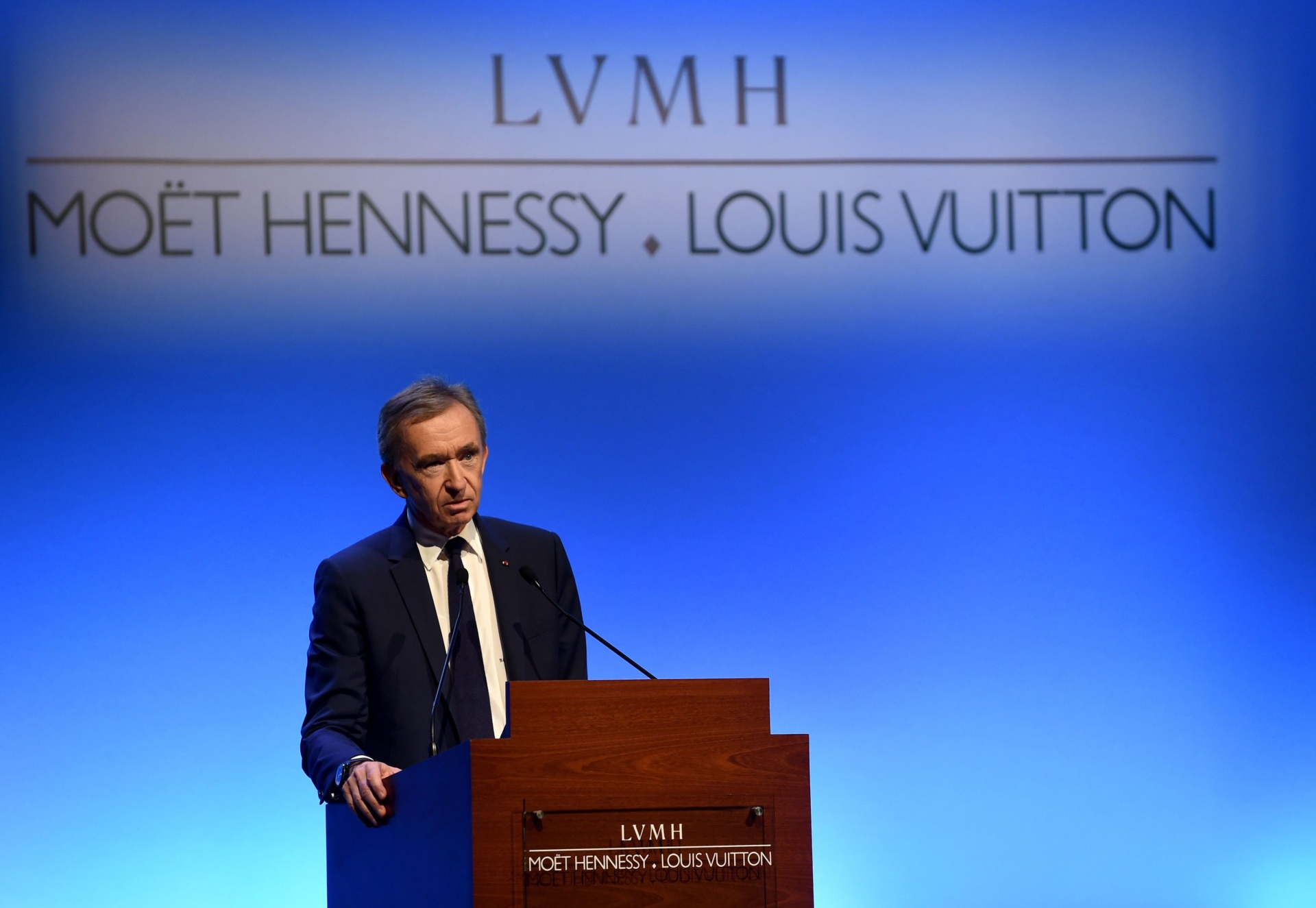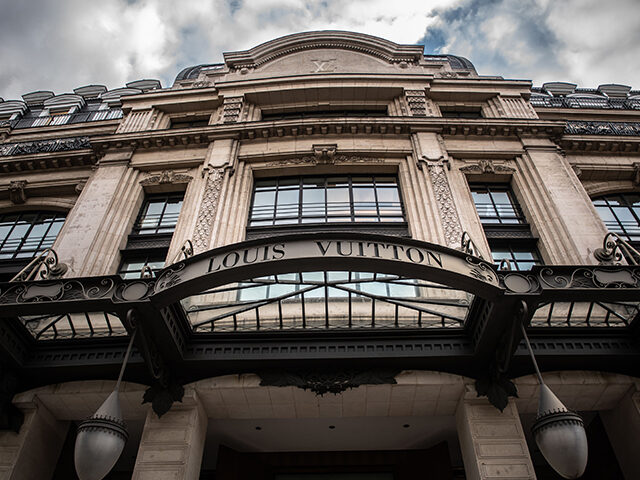LVMH and the Power of Global Luxury
French luxury giant LVMH Moët Hennessy Louis Vuitton just became the first European company with a market value exceeding $500 billion.
This puts LVMH is a very small group of public companies worth half-a-trillion dollars or more. According to FactSet, there are only nine companies with market values of at least $500 billion. Next up on the list is Tesla, which has a market cap of $511 billion according to Yahoo Finance. Saudi Arabia’s Aramco is the only other non-U.S. company in the half-a-trillion dollar club.
Bernard Arnault, the man who built LVHM into the global luxury powerhouse, is now the world’s richest person. Bloomberg lists his fortune at $212 billion.

French luxury group LVMH Chairman and Chief Executive Officer Bernard Arnault presents the annual results for 2017 at the LVMH headquarters in Paris, on January 25, 2018. (ERIC PIERMONT/AFP via Getty Images)
LVHM and its French luxury rivals are becoming economic powerhouses largely decoupled from the performance of their local economies. Even as inflation and high-interest rates have weighed on many economies and threaten to tip countries in Europe and the U.S. into a recession, demand for luxury products has remained strong, and the share prices of the companies that sell them have soared.
A big part of this has been rising wealth in China. And the resurgence of the Chinese economy in the last few months is likely fueling the most recent spurt in LVMH gains. But it is also a broader story about the rise of a global elite, a wealthy class spread across the world that can afford the kind of luxury goods LVMH sells and has the desire to flaunt that wealth with brand names goods like Louis Vuitton, Dior, Moet, and Tiffany & Co.
Here’s a chart of LVMH’s stock performance over the last five years compared with the performance of Macy’s, the quintessential store of the American middle class. As you can see, Macy’s has lost nearly 47 percent of its value while LVHM is up 216 percent.
A Slight Credit Crunch in Texas
The Federal Reserve Bank of Dallas on Monday published its monthly look at local manufacturing conditions. This month’s edition of the Texas Manufacturing Outlook Survey included questions about the credit conditions faced by Texas manufacturing companies, giving an indication of whether the credit crunch many expected to follow the collapse of Silicon Valley Bank has actually begun.
This is especially important because the Dallas Fed’s section of last week’s Beige Book sounded quite alarming when it came to banking. “Credit standards and terms tightened sharply, and marked increases in loan pricing were noted. Banking outlooks continued to deteriorate, with contacts expecting a contraction in loan demand and business activity and an increase in nonperforming loans over the next six months. Increased uncertainty and lack of confidence resulting from the recent banking issues were cited as concerns,” the Dallas Fed said.
Texas manufacturers have a lot of exposure to credit tightening by regional banks. The most recent survey found that 39.8 percent of respondents say they primarily rely on regional banks with between $10 billion and $100 billion of assets. Larger banks are relied on by 28.2 percent, and community banks by 15.8 percent. So, if there is credit crunch stemming from a sharp pullback in lending by small and regional banks, Texas manufacturers would know.
So, what’s happening with Texas lending? Let’s start with short-term lending used to make payrolls or acquire inventory:
- Sixty-six percent of firms said they had no difficulty obtaining financing for short-term uses, down from 71.1 percent in September.
- The share saying they had “some difficulty” rose to 25.1 from 19.1.
- Those saying they had “substantial difficulty” for short-term financing fell to 3,7 from 6.9.
- Those who said they had “extreme difficulty” climbed to 5.1 percent from 2.9 percent.
Here’s what respondents said about longer-term loans:
- The share saying they had no difficulty fell to 65.2 from 70.1 in September.
- The “some difficulty” group grew 5.3 points to 23.3 percent.
- The “substantial difficulty” group fell as a share of respondents to 5.7 from 6.6.
- The “extreme difficulty” share rose to 5.7 percent from 5.2 percent.
These figures suggest a slight credit crunch. It appears to be a continuation of the tightening that has been underway since the Federal Reserve started hiking interest rates. It does not appear to be a sharp reduction in the general availability of credit in either short-term or long-term financing. Certainly nothing dire enough to put the Fed off of another rate hike when it meets next week.


COMMENTS
Please let us know if you're having issues with commenting.